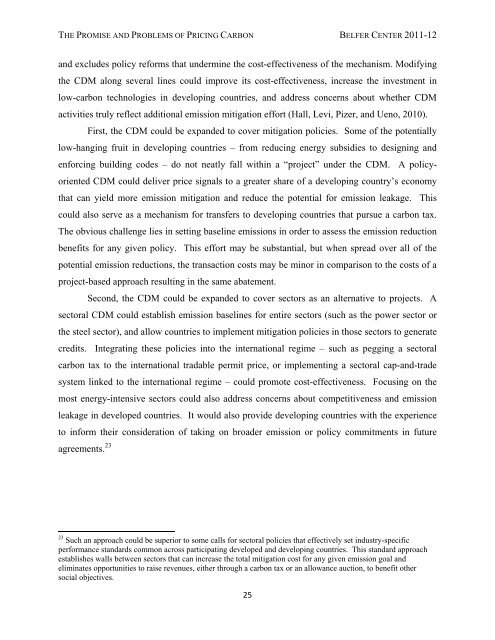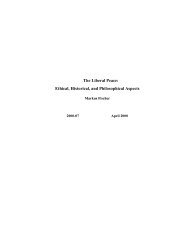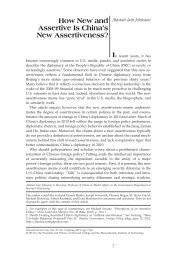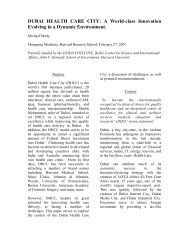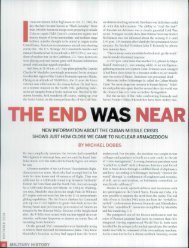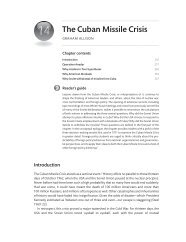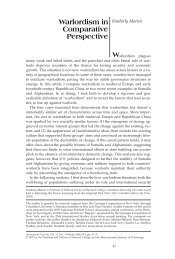The Promise and Problems of Pricing Carbon: - Belfer Center for ...
The Promise and Problems of Pricing Carbon: - Belfer Center for ...
The Promise and Problems of Pricing Carbon: - Belfer Center for ...
Create successful ePaper yourself
Turn your PDF publications into a flip-book with our unique Google optimized e-Paper software.
THE PROMISE AND PROBLEMS OF PRICING CARBON BELFER CENTER 2011-12<br />
<strong>and</strong> excludes policy re<strong>for</strong>ms that undermine the cost-effectiveness <strong>of</strong> the mechanism. Modifying<br />
the CDM along several lines could improve its cost-effectiveness, increase the investment in<br />
low-carbon technologies in developing countries, <strong>and</strong> address concerns about whether CDM<br />
activities truly reflect additional emission mitigation ef<strong>for</strong>t (Hall, Levi, Pizer, <strong>and</strong> Ueno, 2010).<br />
First, the CDM could be exp<strong>and</strong>ed to cover mitigation policies. Some <strong>of</strong> the potentially<br />
low-hanging fruit in developing countries – from reducing energy subsidies to designing <strong>and</strong><br />
en<strong>for</strong>cing building codes – do not neatly fall within a “project” under the CDM. A policyoriented<br />
CDM could deliver price signals to a greater share <strong>of</strong> a developing country’s economy<br />
that can yield more emission mitigation <strong>and</strong> reduce the potential <strong>for</strong> emission leakage. This<br />
could also serve as a mechanism <strong>for</strong> transfers to developing countries that pursue a carbon tax.<br />
<strong>The</strong> obvious challenge lies in setting baseline emissions in order to assess the emission reduction<br />
benefits <strong>for</strong> any given policy. This ef<strong>for</strong>t may be substantial, but when spread over all <strong>of</strong> the<br />
potential emission reductions, the transaction costs may be minor in comparison to the costs <strong>of</strong> a<br />
project-based approach resulting in the same abatement.<br />
Second, the CDM could be exp<strong>and</strong>ed to cover sectors as an alternative to projects. A<br />
sectoral CDM could establish emission baselines <strong>for</strong> entire sectors (such as the power sector or<br />
the steel sector), <strong>and</strong> allow countries to implement mitigation policies in those sectors to generate<br />
credits. Integrating these policies into the international regime – such as pegging a sectoral<br />
carbon tax to the international tradable permit price, or implementing a sectoral cap-<strong>and</strong>-trade<br />
system linked to the international regime – could promote cost-effectiveness. Focusing on the<br />
most energy-intensive sectors could also address concerns about competitiveness <strong>and</strong> emission<br />
leakage in developed countries. It would also provide developing countries with the experience<br />
to in<strong>for</strong>m their consideration <strong>of</strong> taking on broader emission or policy commitments in future<br />
agreements. 23<br />
23 Such an approach could be superior to some calls <strong>for</strong> sectoral policies that effectively set industry-specific<br />
per<strong>for</strong>mance st<strong>and</strong>ards common across participating developed <strong>and</strong> developing countries. This st<strong>and</strong>ard approach<br />
establishes walls between sectors that can increase the total mitigation cost <strong>for</strong> any given emission goal <strong>and</strong><br />
eliminates opportunities to raise revenues, either through a carbon tax or an allowance auction, to benefit other<br />
social objectives.<br />
25


